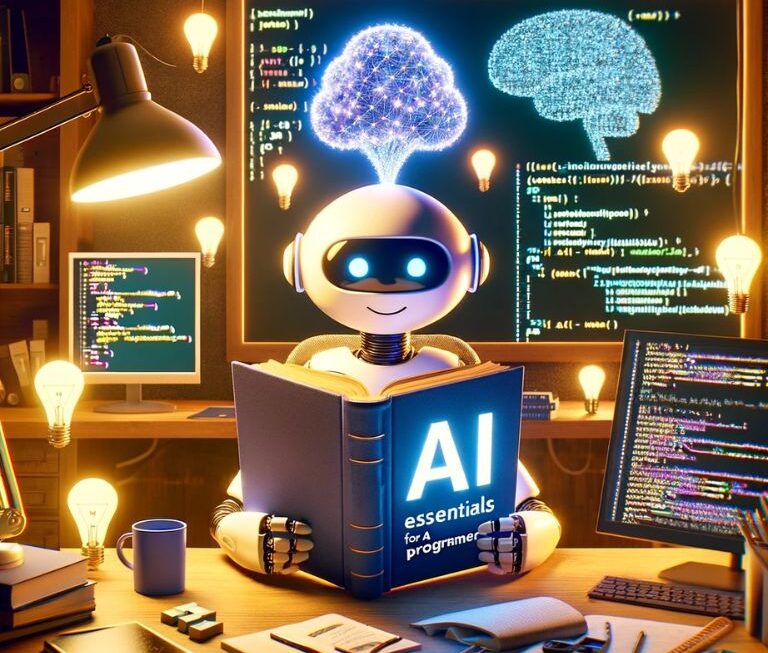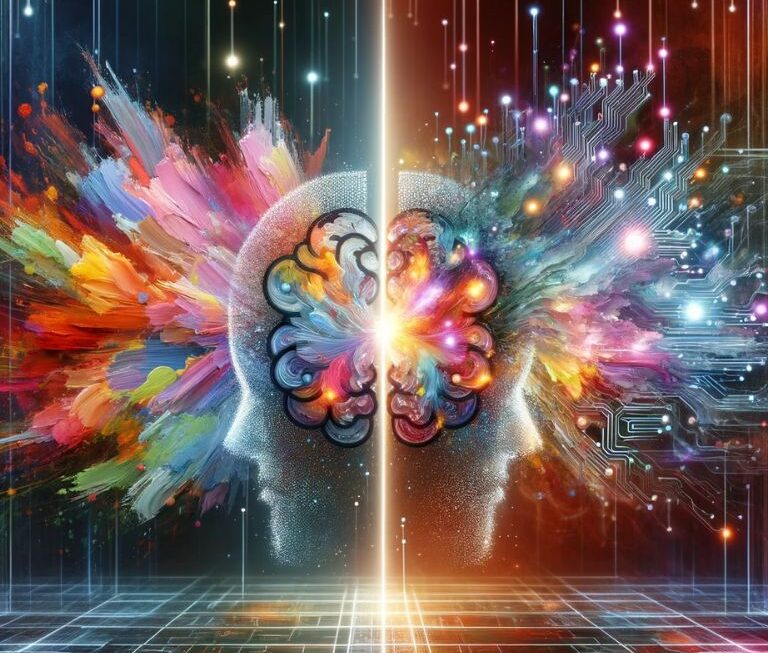The advent of Generative AI has marked a new era in digital content creation, particularly in the realms of video and image generation. This guide delves into the intricacies of Generative AI, focusing on pioneering tools like DALL-E, and explores their multifaceted applications across various industries.
Understanding Generative AI
Generative AI refers to a subset of artificial intelligence that creates new content. It learns from existing data and generates new, similar data. This technology has particularly excelled in generating realistic images and videos.
The Rise of DALL-E
DALL-E, developed by OpenAI, is a prime example of Generative AI. It’s an AI program capable of generating images from textual descriptions, offering unprecedented creative possibilities.
How Generative AI Works
Generative AI represents a groundbreaking shift in artificial intelligence, moving beyond understanding and interpreting data to creating new, original content. This section delves into the foundational technology behind Generative AI, focusing on its application in video and image generation.
The Technology Behind Generative AI
Generative AI operates on the principles of machine learning, but with a unique twist. It doesn’t just analyze data; it generates new data that resembles the input it was trained on. Two main types of neural network architectures are pivotal in this process: Generative Adversarial Networks (GANs) and Variational Autoencoders (VAEs).
Generative Adversarial Networks (GANs)
- Structure: A GAN consists of two parts: the generator and the discriminator. The generator creates images, while the discriminator evaluates them.
- Functioning: The generator produces an image, and the discriminator assesses whether this image is real (from the training dataset) or fake (created by the generator). This process continues until the generator produces images indistinguishable from real ones.
- Applications: GANs are widely used in creating photorealistic images, enhancing image resolution, and even generating art.
Variational Autoencoders (VAEs)
- Mechanism: VAEs are based on the principle of encoding and decoding. They compress data into a smaller representation (encoding) and then reconstruct it (decoding).
- Usage: VAEs are particularly useful in tasks where the structure of the input data is complex but needs to be preserved in the output, such as in face generation or style transfer.
Training Process
The effectiveness of Generative AI in creating realistic images and videos largely depends on its training.
- Data Sets: Generative AI models are trained on vast datasets. For instance, a model specializing in generating human faces would be trained on thousands, if not millions, of face images.
- Learning Phase: During training, the model learns the statistical properties of the training data. In the case of GANs, this involves the generator learning to create more convincing images, while the discriminator becomes better at telling real from fake.
- Iteration and Refinement: The process is iterative. With each cycle, the AI becomes more adept at producing images or videos that are increasingly realistic and aligned with the input data’s characteristics.
Understanding DALL-E’s Mechanism
DALL-E, a variant of these generative models, specifically focuses on generating images from textual descriptions.
- Input Processing: DALL-E interprets the textual description, identifying key elements and concepts.
- Image Generation: Leveraging its training, DALL-E generates an image that corresponds to the textual description. This involves synthesizing visual elements, textures, and colors that it has learned are associated with the described objects or scenes.
- Creativity and Constraints: What sets DALL-E apart is its ability to not just replicate but creatively recombine elements in novel ways, often producing surreal or whimsical images that maintain a realistic quality.
Generative AI, through technologies like GANs and VAEs, and models like DALL-E, represents a significant leap in AI capabilities. It’s not just interpreting the world – it’s creating new versions of it, with vast potential applications in numerous fields. The key to its effectiveness lies in its training and the sophisticated architecture that allows it to learn, iterate, and generate with remarkable creativity and precision.
Applications of Generative AI in Various Fields

The advent of Generative AI has opened up a myriad of possibilities across various sectors. By enabling the creation of realistic and innovative images and videos, this technology is not just a tool for artists and designers but has far-reaching implications in numerous fields. This section explores some of the key areas where Generative AI is making a significant impact.
Creative Arts
Digital Art
- Innovative Artwork Creation: Artists are leveraging Generative AI to push the boundaries of creativity, producing artworks that were previously unimaginable. These AI tools can generate unique patterns, textures, and compositions, providing artists with new mediums and styles to explore.
- Collaborative Art: Generative AI is also seen as a collaborator, where artists input foundational ideas and the AI enhances or builds upon them, leading to a new form of collaborative art.
Graphic Design
- Automated Design Elements: In graphic design, Generative AI can automate the creation of certain elements like backgrounds, textures, and layouts, speeding up the design process.
- Customized Designs: AI tools can generate designs tailored to specific themes or requirements, providing a personalized experience for clients.
Entertainment and Media
Film and Animation
- Special Effects and Character Design: Generative AI is revolutionizing the way special effects and characters are designed in movies and animations. It can create realistic characters or environments, reducing the time and cost involved in manual creation.
- Storyboarding: AI can also assist in visualizing and creating storyboards, providing a visual representation of scenes before actual filming.
Gaming
- Dynamic Game Environments: In video game development, Generative AI can be used to create complex, dynamic environments and textures, enhancing the gaming experience.
- Character Creation: It also offers the potential for creating diverse and unique character models, adding depth and variety to games.
Marketing and Advertising
Ad Campaigns
- Targeted Visual Content: Generative AI can produce customized images and videos for specific target audiences in advertising campaigns, increasing engagement and effectiveness.
- Rapid Content Creation: The speed at which AI can generate visuals aids in quicker campaign rollouts and the ability to test multiple visual strategies in a short time.
Content Creation
- Social Media and Web Content: For social media and web content, Generative AI can quickly produce a variety of visual content, keeping feeds fresh and engaging.
Education and Research
Educational Content
- Visual Aids: Generative AI can create detailed diagrams, illustrations, and animations, making complex subjects more understandable for students.
- Customized Learning Materials: It can also tailor educational content to suit different learning styles and levels.
Scientific Visualization
- Data Representation: In scientific research, Generative AI can help visualize complex data sets, making it easier to identify patterns and insights.
- Simulations: It can generate simulations of natural phenomena or engineering marvels, aiding in research and development.
Healthcare
Medical Imaging
- Enhanced Imaging Techniques: Generative AI can improve the quality of medical images, aiding in more accurate diagnoses.
- Synthetic Data Generation: It can also generate synthetic medical images for training and research purposes, where real data may be scarce or sensitive.
Architecture and Urban Planning
Design and Visualization
- Architectural Renderings: Generative AI can produce detailed architectural renderings and visualizations, aiding in the design process.
- Urban Simulation: It can simulate urban environments and changes, helping in urban planning and decision-making.
The applications of Generative AI are vast and varied, cutting across numerous industries. From enhancing creativity in the arts to revolutionizing practices in healthcare and urban planning, Generative AI is not just a futuristic concept but a present-day tool that is reshaping how we work and create. As this technology continues to evolve, its potential applications are bound to expand, offering even more innovative solutions to complex problems.
Step-by-Step Guide to Using DALL-E

DALL-E, developed by OpenAI, is a cutting-edge Generative AI tool capable of creating images from textual descriptions. This section provides a detailed, step-by-step guide to using DALL-E, enabling both beginners and experienced users to explore its capabilities.
Getting Started with DALL-E
Accessing DALL-E
- Visit the OpenAI Website: Start by visiting the OpenAI website and navigating to the DALL-E page.
- Sign Up or Log In: If you’re new to OpenAI, you’ll need to create an account. If you already have an account, simply log in.
Understanding the Interface
- Dashboard Overview: Familiarize yourself with the DALL-E dashboard. It typically includes areas for inputting text, viewing generated images, and accessing previous projects.
- Tool Features: Identify key features such as the text input box, image gallery, and any advanced settings for image generation.
Creating Your First Image with DALL-E
Crafting Effective Descriptions
- Be Specific: The more detailed your description, the more accurate the image generation will be. For example, “a two-story blue house with a white picket fence under a sunny sky” gives DALL-E a clear picture to create.
- Experiment with Creativity: DALL-E can handle creative and surreal descriptions, so feel free to experiment with imaginative scenarios.
Generating the Image
- Input Your Description: Type your detailed description into the text box.
- Initiate Generation: Submit your description. DALL-E will process the text and start generating the image.
- Wait for the Results: Image generation may take a few moments. Once done, the generated images will be displayed.
Refining Your Results
Adjusting Parameters
- Modify Descriptions: If the initial results aren’t what you expected, try adjusting your description. Sometimes, minor tweaks can significantly change the outcome.
- Use Advanced Options: Depending on the version of DALL-E you are using, there may be advanced options to refine color, style, or certain elements of the image.
Saving and Downloading Images
- Select Your Image: Choose the image that best fits your requirements.
- Save or Download: Use the provided options to save the image to your account or download it to your device.
Advanced Techniques
Combining Concepts
- Mashup Descriptions: DALL-E excels at combining multiple concepts into a single image. For example, “a cat with the texture of a watermelon” would merge two distinct concepts creatively.
- Balance Your Ideas: While being creative, ensure your description isn’t too convoluted, as this might confuse the AI or lead to less coherent results.
Fine-Tuning for Perfection
- Iterative Approach: Fine-tuning with DALL-E often requires an iterative approach. Make small changes to your description and observe how each affects the output.
- Learn from Examples: Explore examples from other DALL-E users to understand how different descriptions translate into images.
Ethical Considerations
- Respect Copyright: Be mindful of creating images that might infringe on someone else’s copyright.
- Consider Sensitivity: Avoid generating images that could be offensive or harmful.
Using DALL-E can be an exciting and creative experience. Whether you’re looking to generate unique artwork, conceptual designs, or just exploring the capabilities of AI in image generation, following these steps will help you make the most out of this powerful tool. Remember, the key to mastering DALL-E lies in experimentation and understanding how your textual inputs translate into visual outputs.
Ethical Considerations and Best Practices
As with any powerful technology, the use of Generative AI, particularly in image and video generation, comes with a set of ethical considerations and best practices. This section outlines the key ethical issues and provides guidance on how to responsibly use tools like DALL-E.
Ethical Implications
Copyright and Originality
- Respect for Intellectual Property: Always be mindful of the intellectual property rights when generating images. Avoid creating images that closely resemble copyrighted works.
- Attribution: Properly attribute the AI tool (like DALL-E) when publishing AI-generated images, especially in commercial or public domains.
Bias and Representation
- Awareness of Inherent Biases: Recognize that AI models, including DALL-E, are trained on datasets that may contain biases. These biases can be reflected in the generated images.
- Promoting Diversity and Inclusivity: Strive to use Generative AI in a way that promotes diversity and inclusivity, being aware of the potential for reinforcing stereotypes.
Privacy Concerns
- Use of Personal Data: Be cautious when using personal data (like photographs of individuals) to train or inform Generative AI models, respecting privacy and data protection laws.
Best Practices
Responsible Usage
- Purpose and Context: Consider the purpose and context of using Generative AI. Ensure that the use aligns with ethical standards and societal norms.
- Transparency: Be transparent about the use of AI-generated content, especially in contexts where authenticity is crucial (like news media).
Staying Informed and Compliant
- Legal Compliance: Stay informed about the legal landscape regarding AI-generated content, as laws and regulations can vary across regions and are evolving.
- Continuous Learning: The field of AI is rapidly evolving. Keep abreast of the latest developments, ethical discussions, and best practices in AI.
Quality Control and Verification
- Fact-Checking: In cases where AI-generated images are used to convey information, ensure that they are fact-checked and do not mislead the audience.
- Quality Assurance: Regularly review and assess the quality of AI-generated content to ensure it meets the intended standards and purposes.
Community Engagement
- Participate in Discussions: Engage with the broader community of AI practitioners, ethicists, and users to share experiences, discuss challenges, and collaboratively develop ethical guidelines for AI use.
- Feedback Mechanisms: Implement and encourage feedback mechanisms to understand the impact of AI-generated content and make necessary adjustments.
FAQs
Yes, tools like DALL-E are designed to be user-friendly, making them accessible for beginners.
While Generative AI is a powerful tool, it’s not a replacement for human creativity but rather a complement to it.
DALL-E has limitations, especially in understanding complex or abstract concepts, and is bound by its training data and algorithms.
Always credit AI tools used, be mindful of potential biases, and respect copyright and intellectual property laws.
While DALL-E is focused on images, other AI tools are capable of generating short video clips and animations.
Generative AI, exemplified by tools like DALL-E, is transforming the landscape of video and image generation. Its applications span across creative arts, entertainment, marketing, and beyond, offering a glimpse into a future where AI aids in unleashing human creativity and innovation. As we embrace these technologies, it’s crucial to navigate their ethical implications and employ best practices to harness their full potential responsibly.




